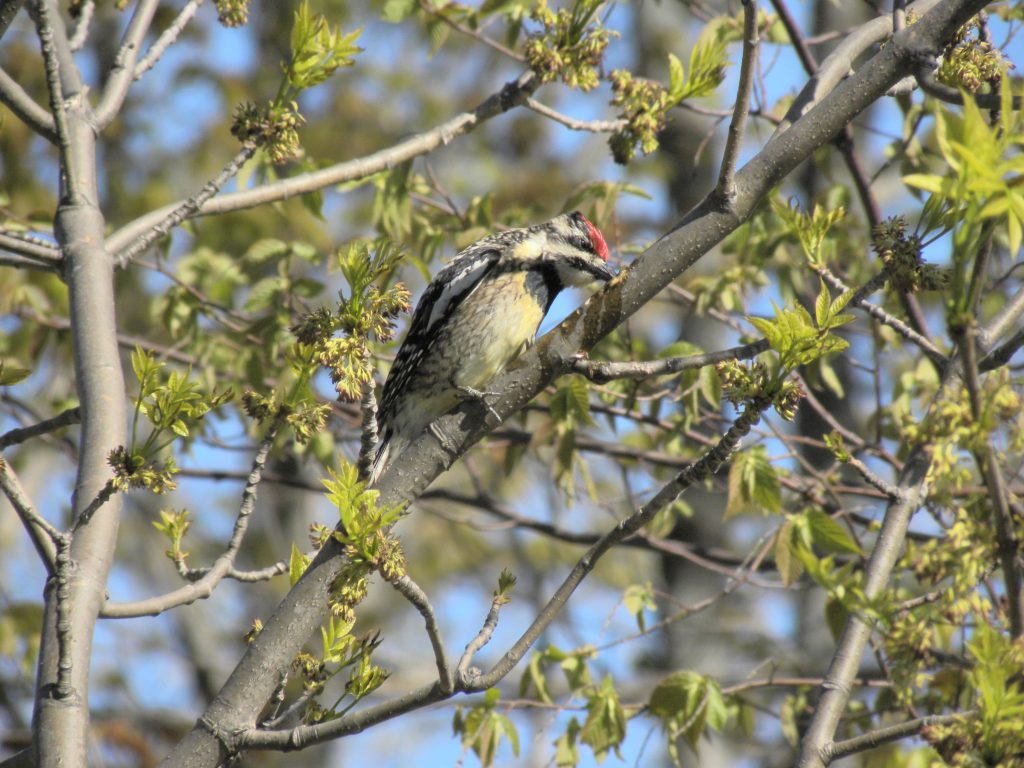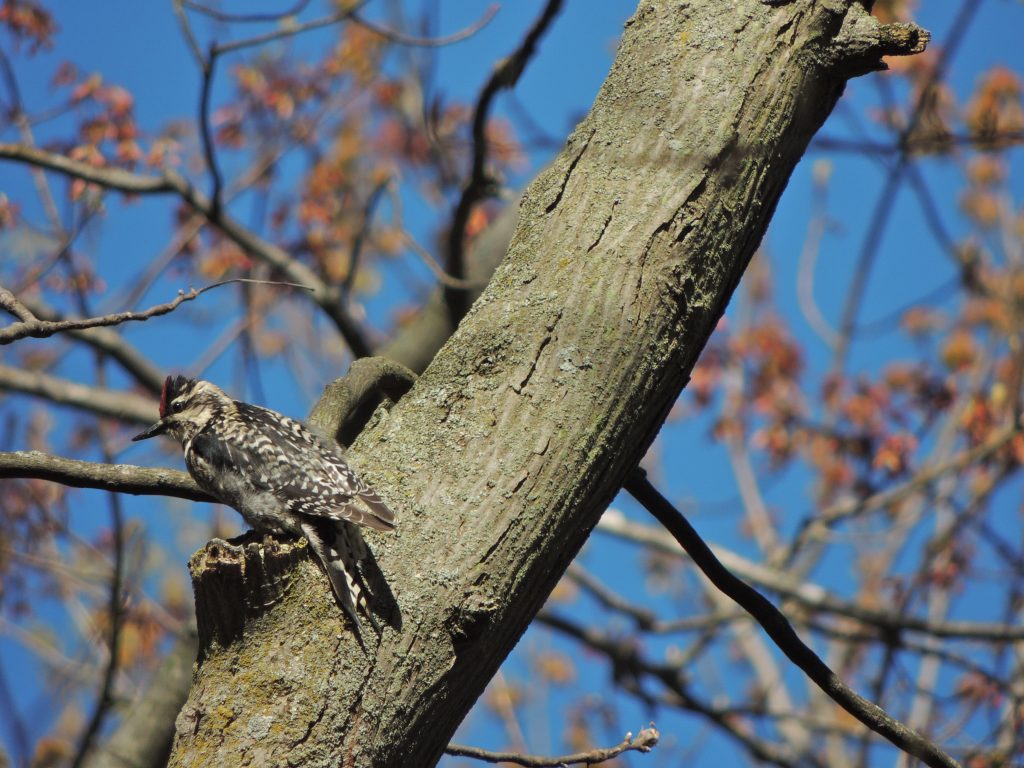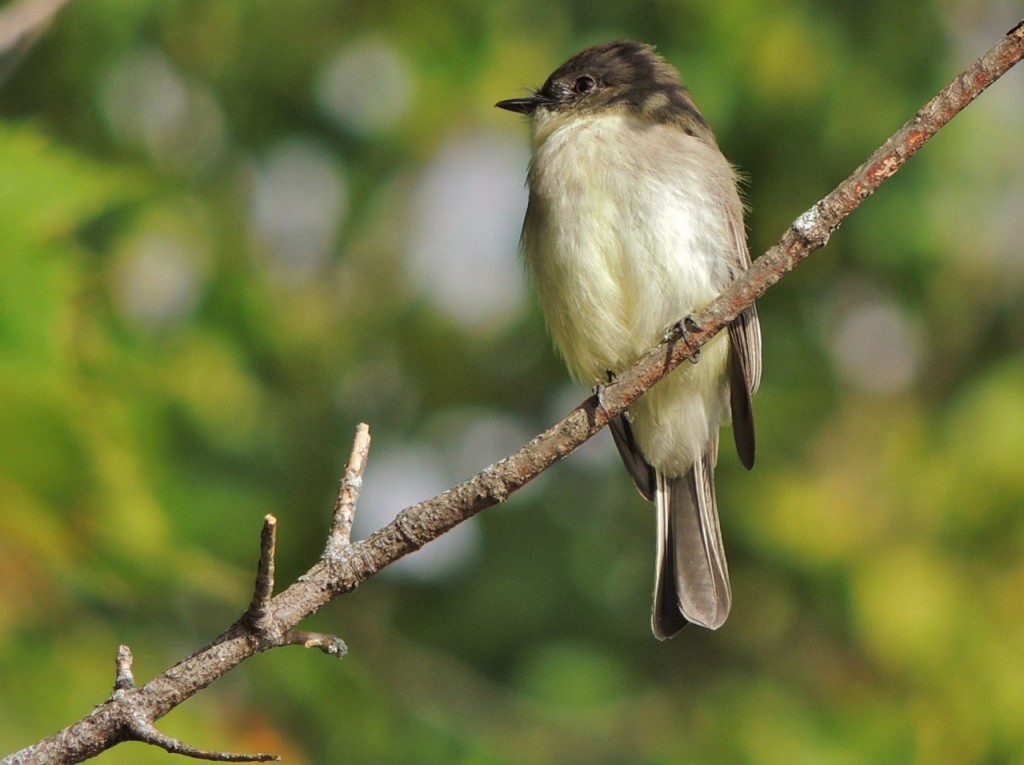
Rondeau Provincial Park. ON. May 13, 2024. I am less inclined to drive distances for birding these days but every now and then I’ll do it, get up at first light and go. I did so this morning, went without breakfast counting on a highway stop somewhere along the way. It was a little after eight when I paid the park’s daily admission fee less senior’s discount, and breathed in the fresh green stillness of Rondeau Provincial Park.
Rondeau reaches out a little into Lake Erie keeping it a touch cooler and less thickly leafed-out for a while in spring.
Despite my apparent resolve, I arrived at Rondeau with modest ambition, I just wanted to spend a bit of time in a reliably birdy place and move at my own pace, or maybe just sit and stare. There is a woodland trail not far from the visitors’ centre, it leads through a swampy broadleaf forest, the sort of place you’d avoid if there were any mosquitoes. Being cool there were none today, it was exactly what I was looking for.
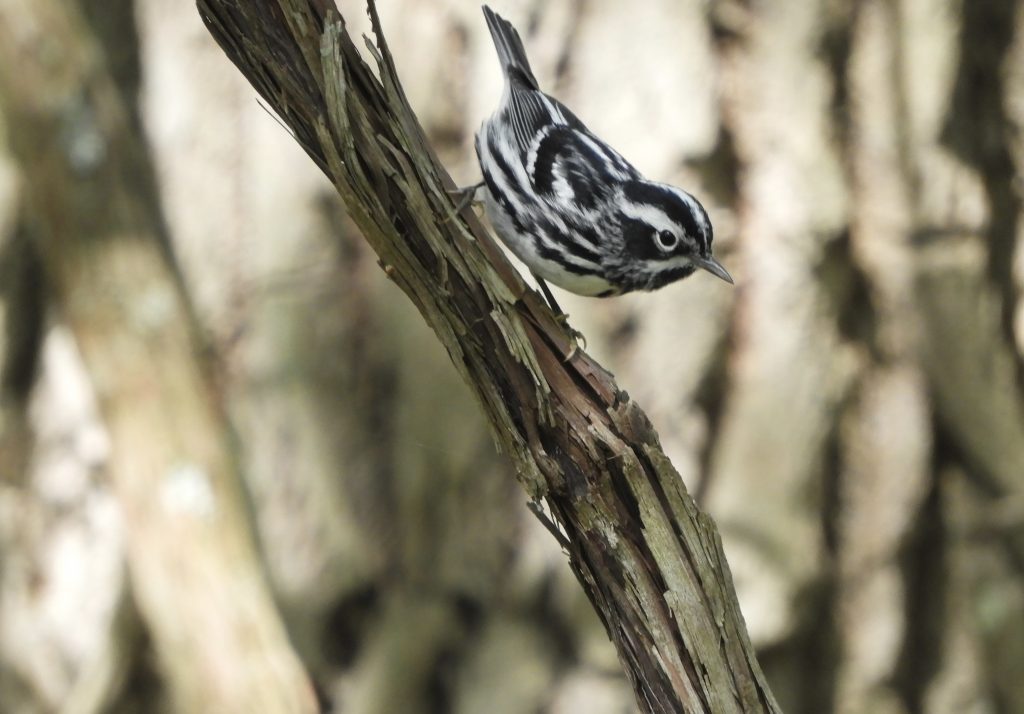
I didn’t keep a list but enjoyed lingering looks at Bay-breasted, Black & White and Black–throated Blue Warblers among others. Pileated and Red–headed Woodpeckers were easy watching and what I took for a Great-crested Flycatcher turned out to be an Olive–sided Flycatcher which is an uncommon bird in southern Ontario but conspicuously not so in the north, it was just passing through.
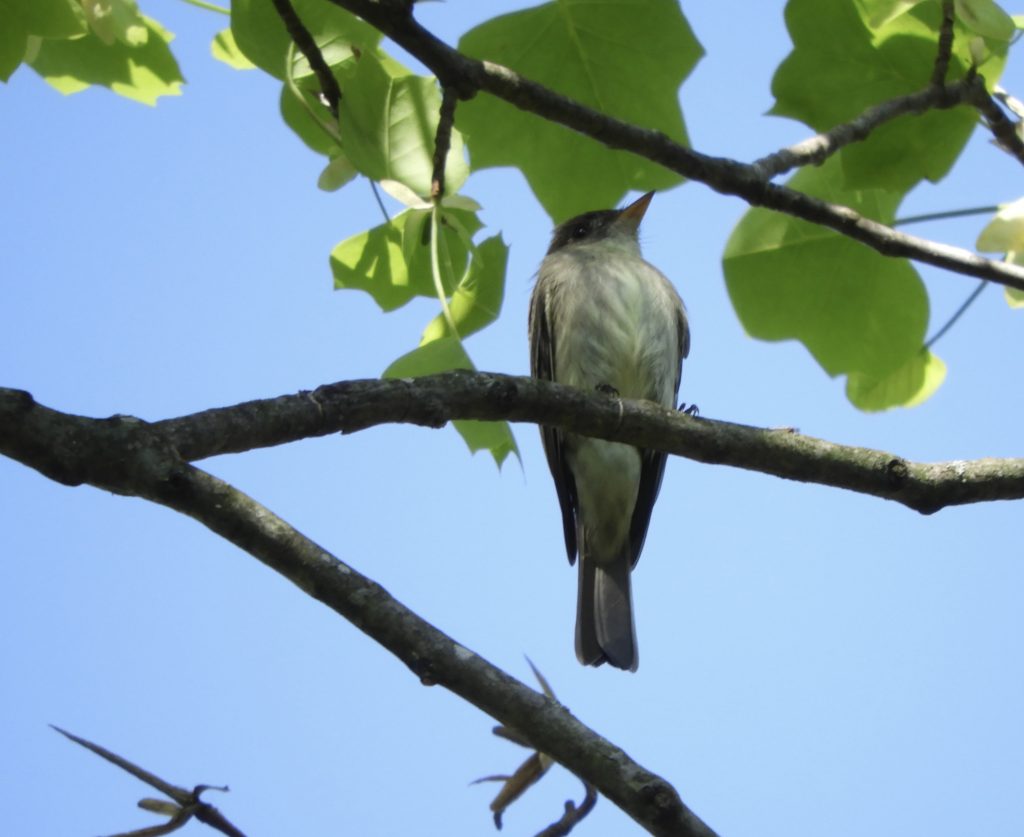
My Bird of the Day was this Blue–headed Vireo for two reasons. First because it’s a Blue-headed Vireo, a no-nonsense favourite of mine; Second because my camera captured it with a large, winged insect in its bill and therein a metaphor for what makes the world go around.
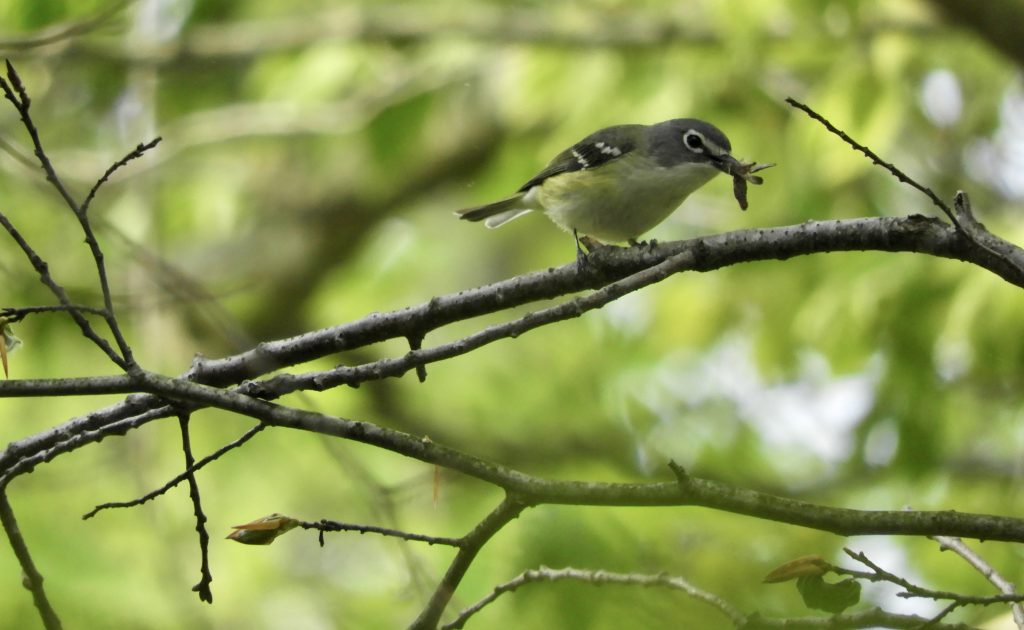
The fly, which I choose to identify as one of those nasty, biting Deer Flies, probably emerged not long ago from its pupa in the wet woodland below. Before the pupal stage we would have dismissed it as a loathsome maggot or grub, rather unsightly and we’re quite happy to see a vireo grab and eat it. That Deer Fly once consumed, and along with many more just like it, will fuel this vireo for a few more days on its migratory journey north. More flies, beetles, bees, and ants will keep the ball rolling in months ahead, summer, fall and winter, to ensure the next generation of vireos. All of them bits in a food chain. A chain that used to include humans although most of us have managed to somehow side-step it in favour of breakfast on the run and day-use parks as wilderness.
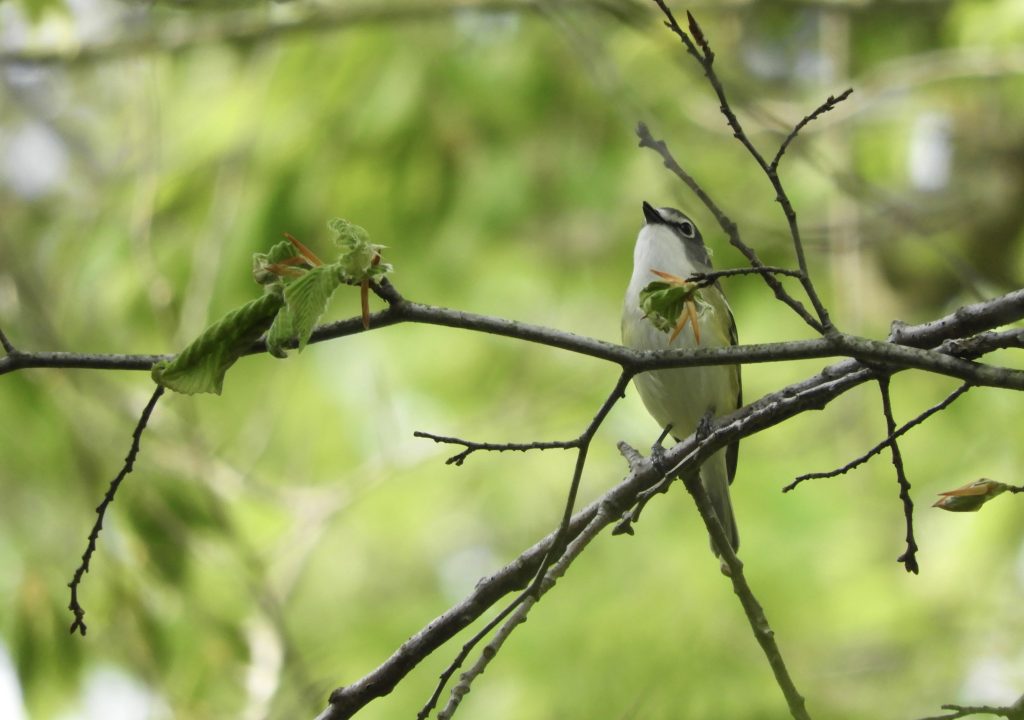
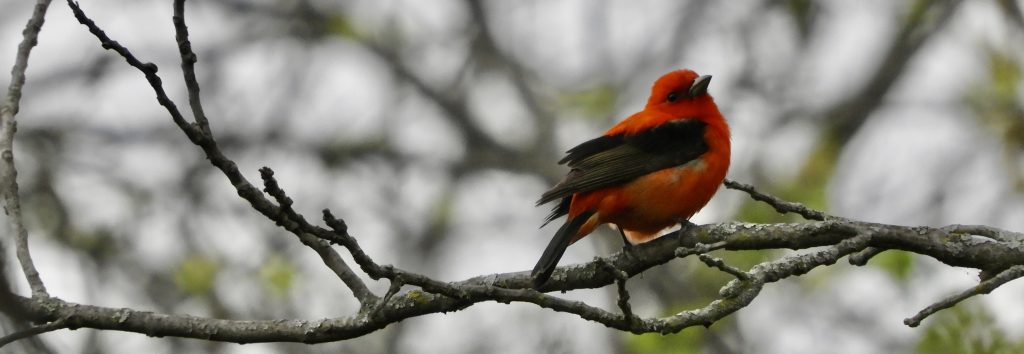 Princess Point, Hamilton. ON. May 12, 2024. I witnessed something altogether new to me today, bird behaviour I’d never seen before. I had just started a transect on a very busy and birdy May morning and was making my way along the woodland edge of a wide grassy park. I was struggling to sort out the almost overwhelming variety of bird song and sound when I caught sight of different movement. I’d read about it before so immediately knew I was seeing the courtship flight of a male Ruby-throated Hummingbird.
Princess Point, Hamilton. ON. May 12, 2024. I witnessed something altogether new to me today, bird behaviour I’d never seen before. I had just started a transect on a very busy and birdy May morning and was making my way along the woodland edge of a wide grassy park. I was struggling to sort out the almost overwhelming variety of bird song and sound when I caught sight of different movement. I’d read about it before so immediately knew I was seeing the courtship flight of a male Ruby-throated Hummingbird.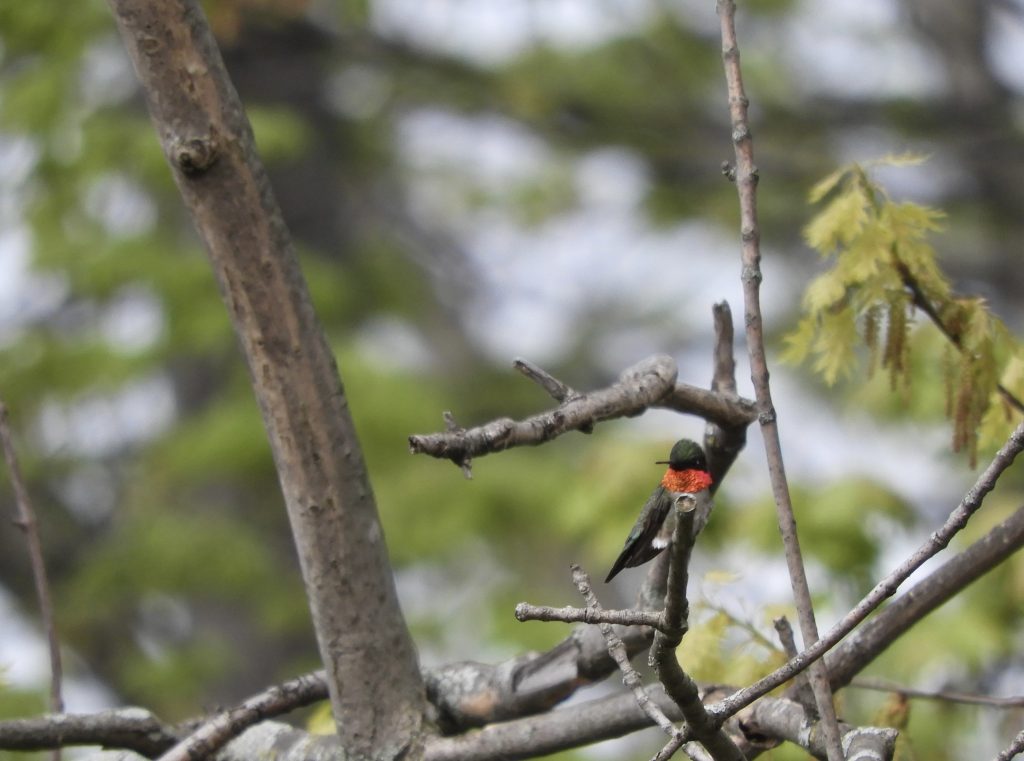
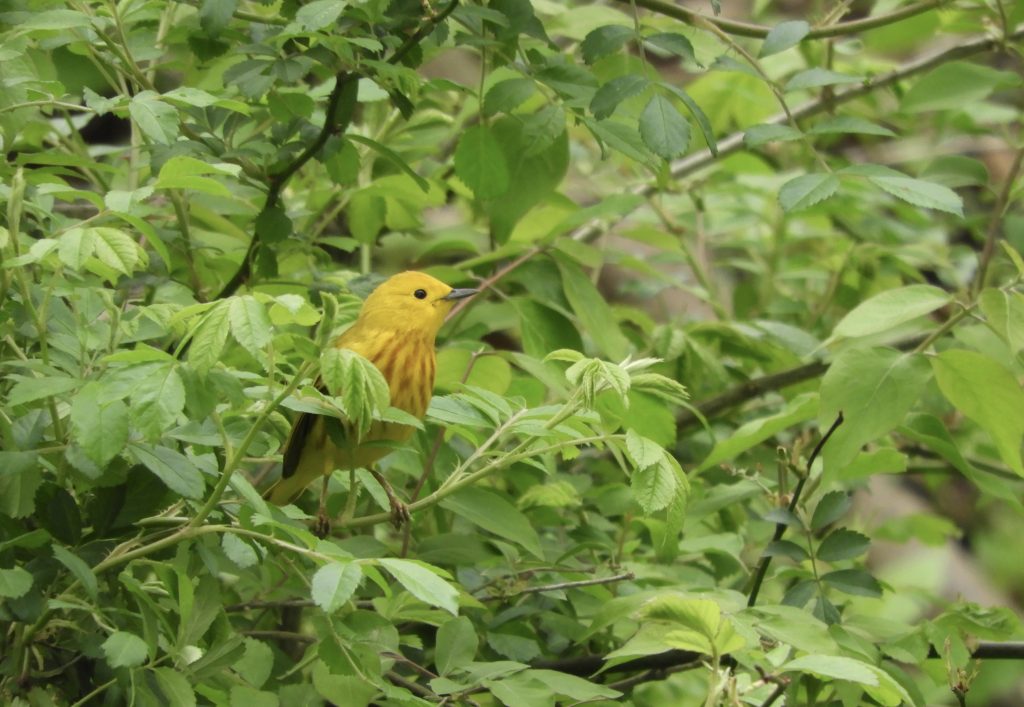
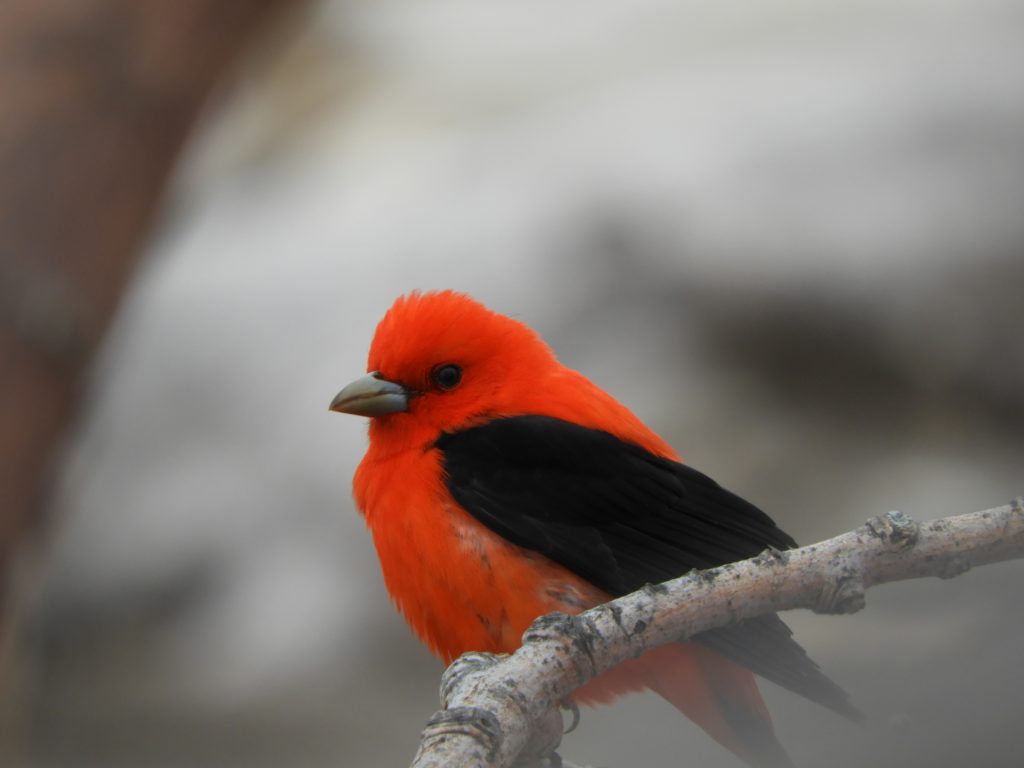
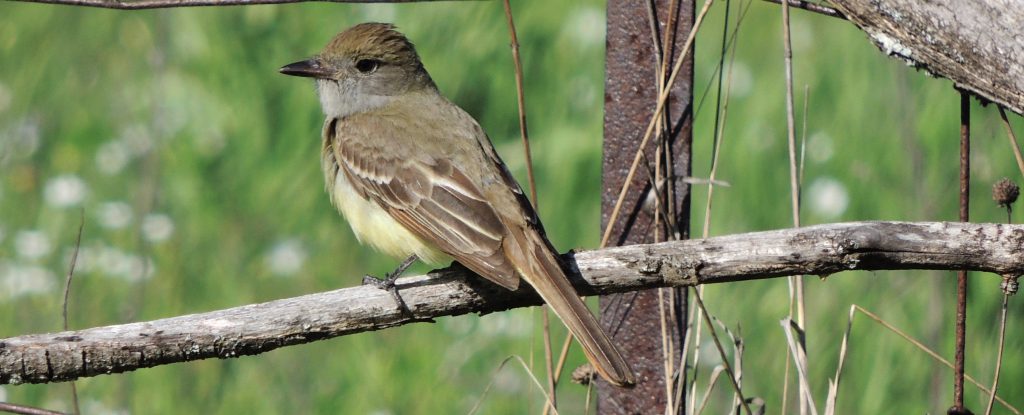 Hendrie Valley, Burlington. ON. May 1, 2024. May! The biggest birding month. We’ve been greeting spring migrants for several weeks, especially thoughout April, but nothing can hold a candle to May.
Hendrie Valley, Burlington. ON. May 1, 2024. May! The biggest birding month. We’ve been greeting spring migrants for several weeks, especially thoughout April, but nothing can hold a candle to May.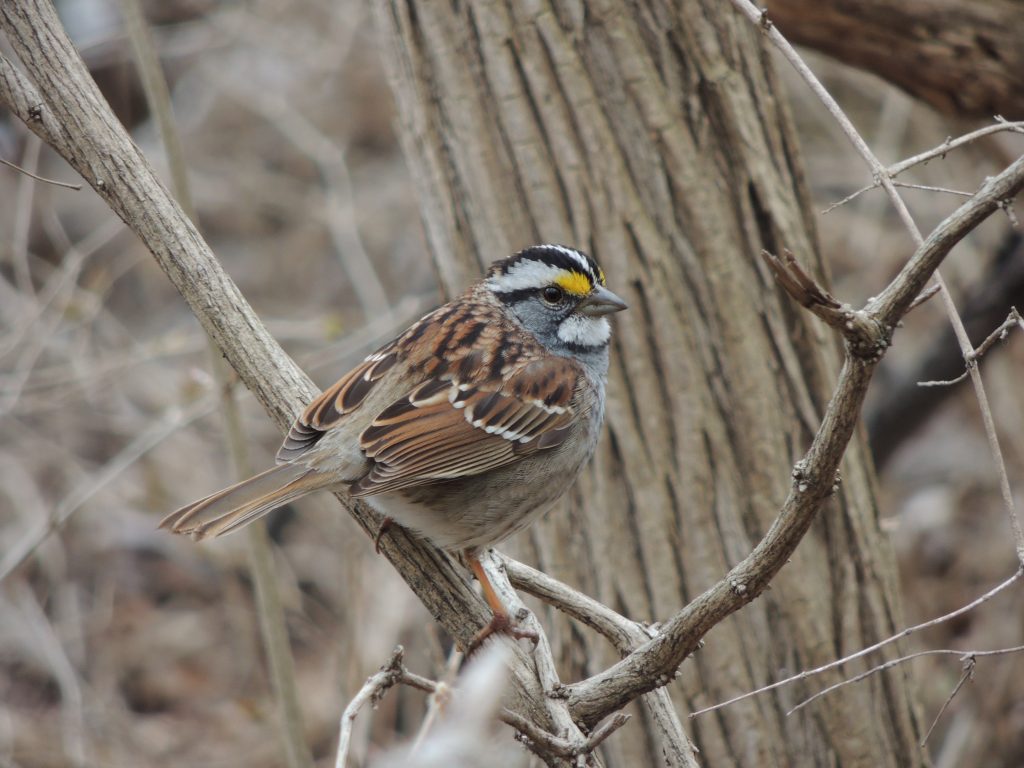
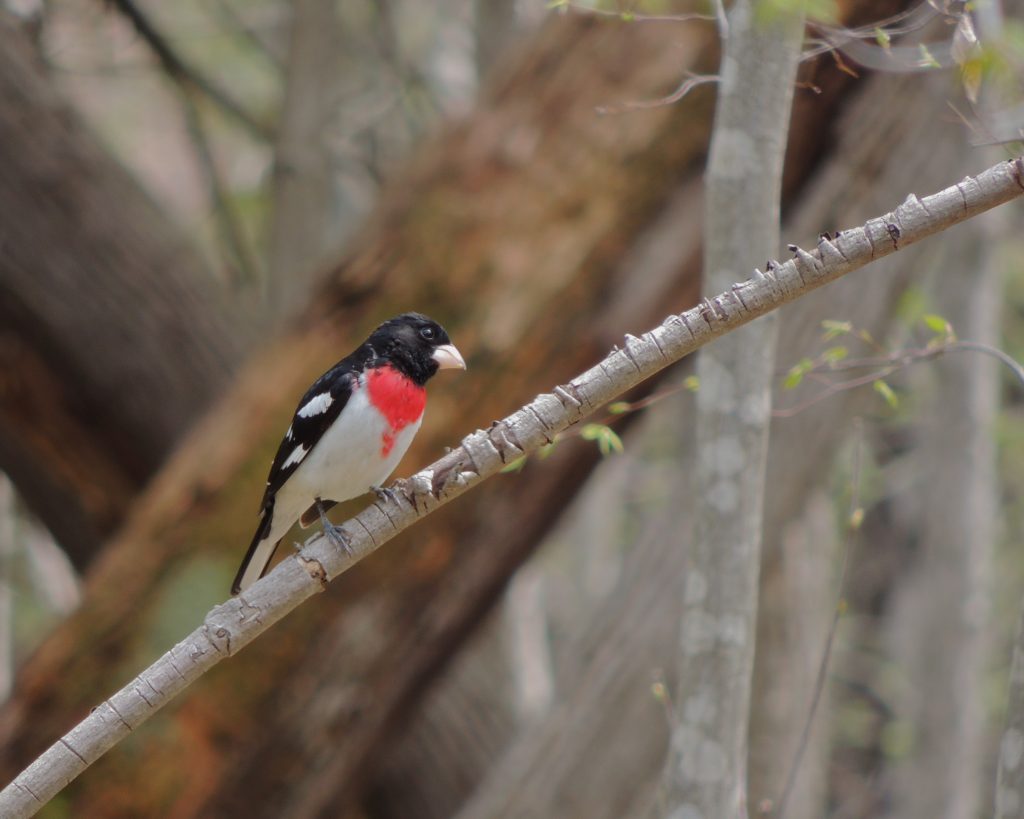
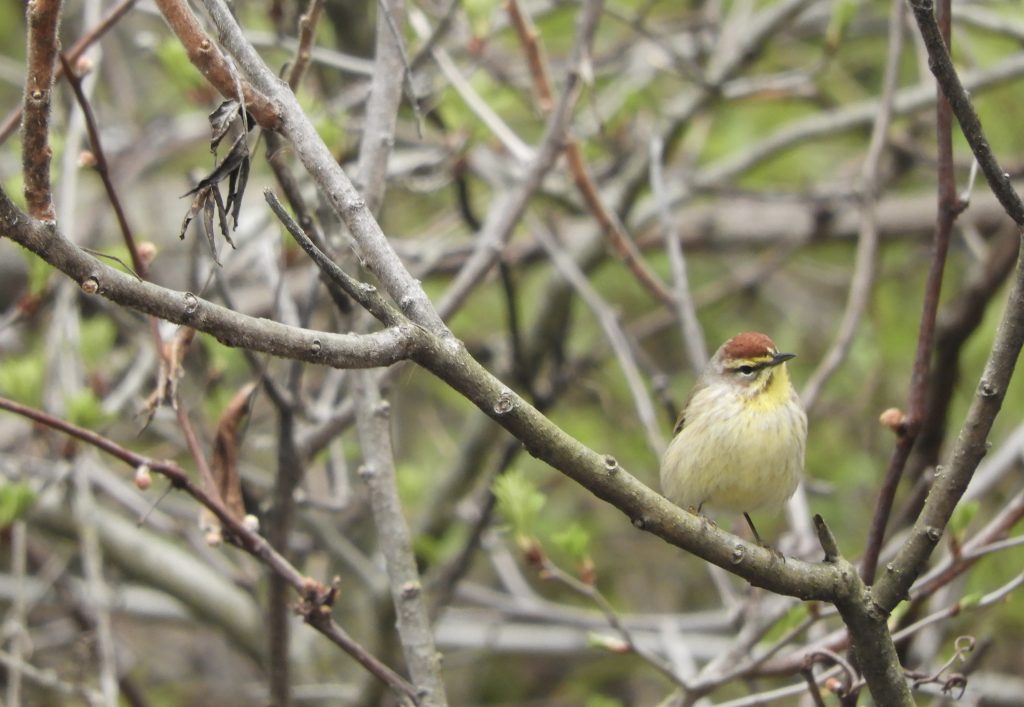
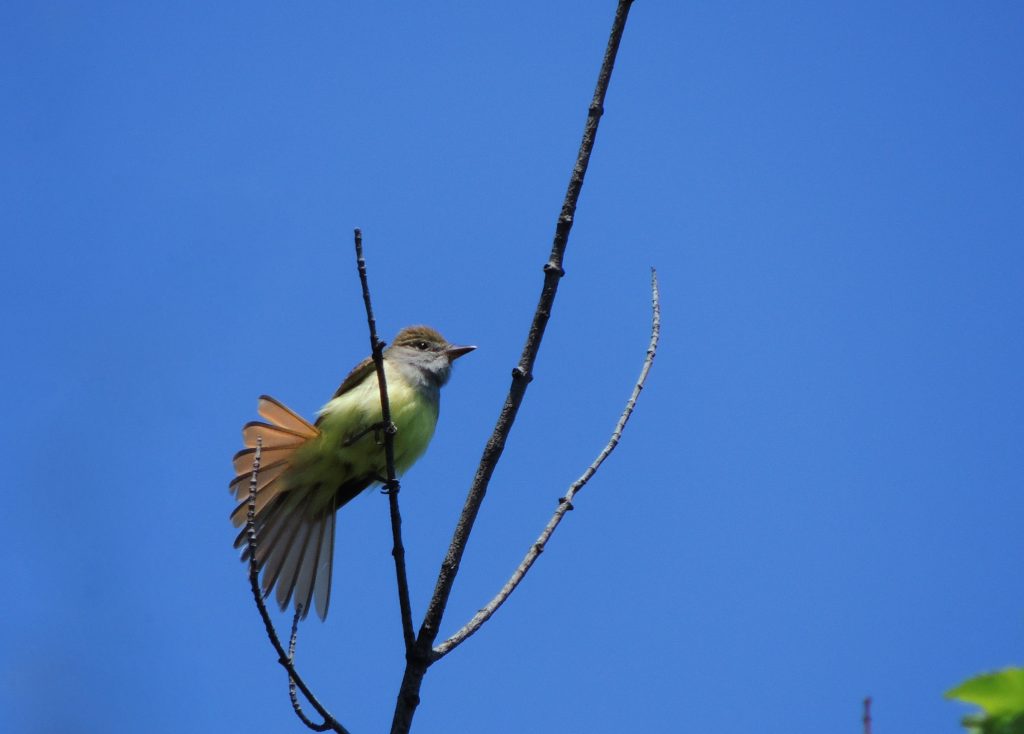
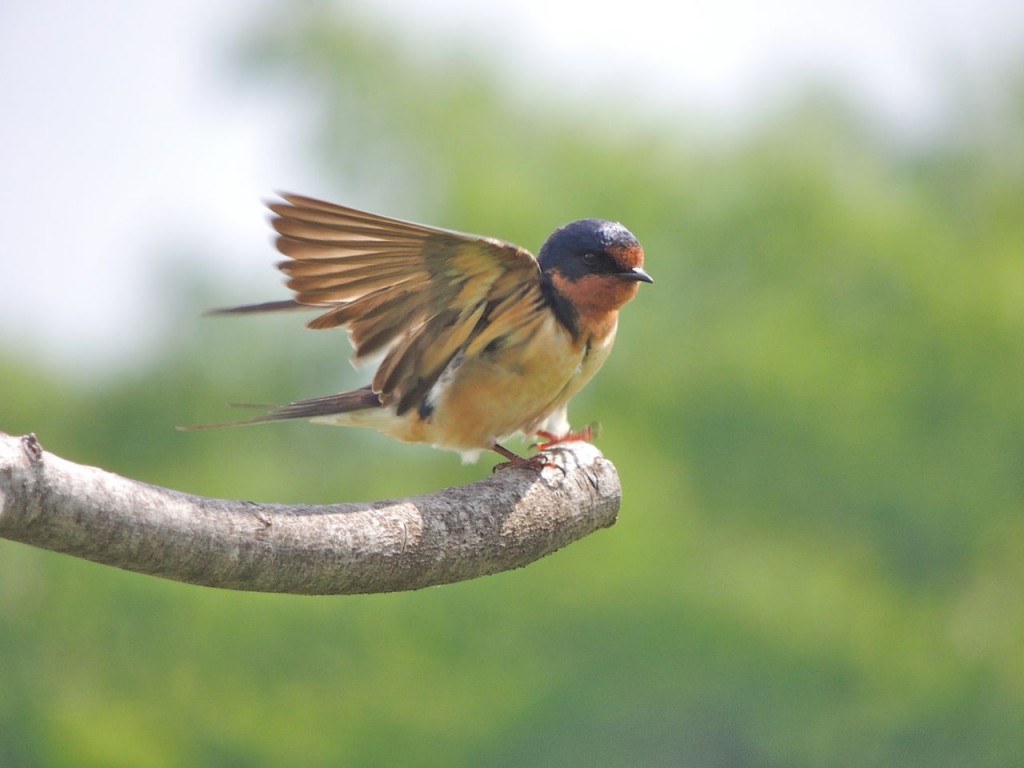
 Princess Point, Hamilton. ON. April 20, 2024. Many decades ago as a recent immigrant, I was often at a loss to identify so many new-to-me birds. I’d been a casual and ill-equipped birder in my English youth but getting settled in Canada had led to paying much more attention to birds, as well as getting married, paying rent and other signs of adulthood of course. I often think back to one spring day and being confounded by little birds that looked for all the world like warblers yet didn’t match anything in my field guide. They were small, olive drab, showed a pale wing bar, and flitted and foraged endlessly. I thumbed back and forth through Peterson’s warbler illustrations. Then, for a just moment, one of them showed a bright crimson crown-patch. Now I had something I could hold on to. I was familiar with the Goldcrests and Firecrests of Europe and these little things were their lookalikes, the closely related Ruby-crowned Kinglets!
Princess Point, Hamilton. ON. April 20, 2024. Many decades ago as a recent immigrant, I was often at a loss to identify so many new-to-me birds. I’d been a casual and ill-equipped birder in my English youth but getting settled in Canada had led to paying much more attention to birds, as well as getting married, paying rent and other signs of adulthood of course. I often think back to one spring day and being confounded by little birds that looked for all the world like warblers yet didn’t match anything in my field guide. They were small, olive drab, showed a pale wing bar, and flitted and foraged endlessly. I thumbed back and forth through Peterson’s warbler illustrations. Then, for a just moment, one of them showed a bright crimson crown-patch. Now I had something I could hold on to. I was familiar with the Goldcrests and Firecrests of Europe and these little things were their lookalikes, the closely related Ruby-crowned Kinglets!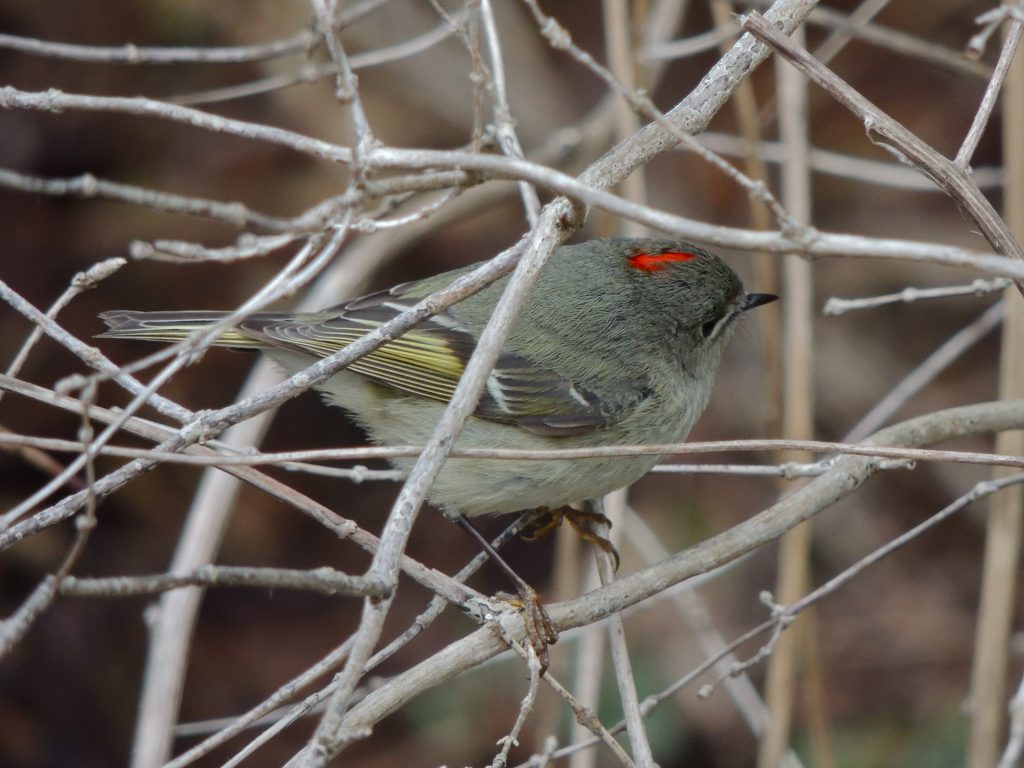

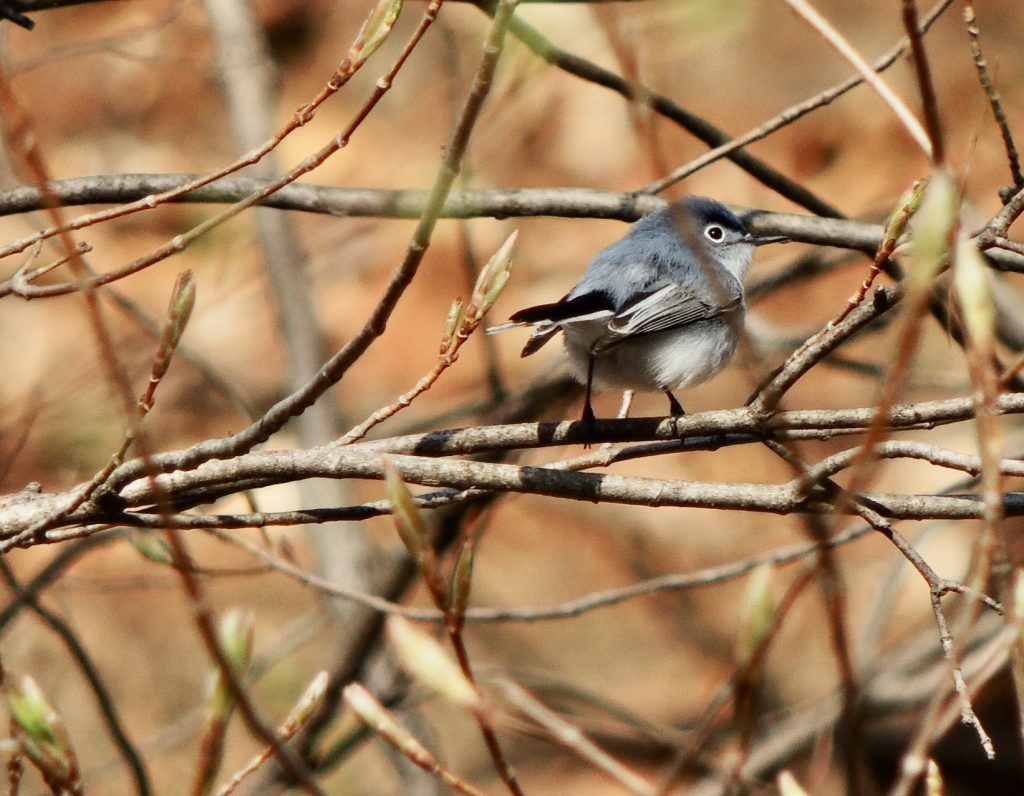
 Princess Point, Hamilton. ON. April 13, 2024. Caught by conflicting promises I tried to squeeze in today’s transect by starting at 7:30 but rain put paid to that. You can’t realistically blame the weather; it’s always been around but it sure complicated things and I found myself having to start an hour later and in Force 6 winds. Benignly labeled a Strong Breeze, Force 6 is ‘Large branches in motion; whistling heard in telegraph wires; umbrellas used with difficulty.” To all of that at six degrees C. I can only add that it made my eyes water, nose drip and knuckles stiffen.
Princess Point, Hamilton. ON. April 13, 2024. Caught by conflicting promises I tried to squeeze in today’s transect by starting at 7:30 but rain put paid to that. You can’t realistically blame the weather; it’s always been around but it sure complicated things and I found myself having to start an hour later and in Force 6 winds. Benignly labeled a Strong Breeze, Force 6 is ‘Large branches in motion; whistling heard in telegraph wires; umbrellas used with difficulty.” To all of that at six degrees C. I can only add that it made my eyes water, nose drip and knuckles stiffen.